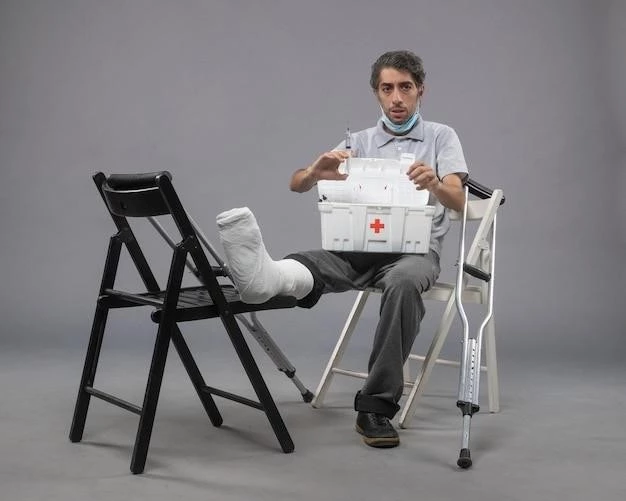Disease⁚ Primary orthostatic tremor

Introduction to Primary Orthostatic Tremor
Primary orthostatic tremor (POT) is a rare neurologic movement disorder characterized by unsteadiness in gait due to a pathognomonic 13-18 Hz tremor affecting the legs and trunk, detected by surface EMG while standing․ Involvement of upper extremities is less frequent․
Disease⁚ Primary orthostatic tremor
Definition and Characteristics
Primary orthostatic tremor (POT) is a rare neurological disorder characterized by a high-frequency tremor (13 Hz) mainly affecting the legs when standing․ Patients experience instability on standing but often have a normal gait․ This condition can significantly impact daily life and quality of life, although it is often under-diagnosed․ Understanding the unique characteristics of this disorder is crucial for accurate diagnosis and appropriate management․

Clinical Presentation of Primary Orthostatic Tremor
Primary orthostatic tremor (POT) presents as a high-frequency tremor, mainly affecting the legs, leading to instability while standing․ This condition can severely impact gait and standing stability․
Symptoms and Impact on Patients
Primary orthostatic tremor (POT) manifests as an unsteadiness during standing, primarily affecting the legs, leading to gait disturbances and instability․ This condition can greatly impact patients’ ability to stand or walk without support, affecting their daily activities and overall quality of life․
Diagnosis and Differential Diagnosis
Diagnosing primary orthostatic tremor (POT) involves recognizing the high-frequency leg tremor that occurs when standing still․ Differential diagnosis includes other movement disorders like essential tremor or Parkinson’s disease․ Proper evaluation by a neurologist and possibly nerve conduction studies can help confirm the diagnosis․
Treatment Options for Primary Orthostatic Tremor
Patients with primary orthostatic tremor (POT) have limited treatment options, including medications like clonazepam and gabapentin, which have shown mixed effectiveness․ Deep brain stimulation may also be considered in severe cases where medications are ineffective․
Medication Management
Patients with primary orthostatic tremor (POT) often receive treatment with medications such as clonazepam and gabapentin․ However, the efficacy of these medications is variable, and some patients may not respond well to them․ It is essential for individuals with POT to work closely with their healthcare providers to find the most suitable medication regimen to manage their symptoms effectively․
Deep Brain Stimulation
Deep brain stimulation is a potential treatment option for individuals with primary orthostatic tremor (POT) who do not respond well to medications․ This procedure involves implanting electrodes in specific areas of the brain to help regulate abnormal tremor signals․ It is crucial for patients to consult with a neurologist specializing in movement disorders to determine the suitability and potential benefits of deep brain stimulation for managing POT symptoms․
Research and Pathogenesis of Primary Orthostatic Tremor
Research on primary orthostatic tremor (POT) focuses on understanding the underlying causes and mechanisms of this rare neurological disorder․ Neuroimaging studies reveal structural abnormalities in the cerebellum, while electrophysiological studies suggest aberrant central oscillators․ Further research aims to uncover the pathogenesis to enhance treatment strategies and improve patient outcomes․
Neuroimaging Studies
Neuroimaging studies have shown structural and functional abnormalities in the cerebellum and its connections in individuals with primary orthostatic tremor (POT)․ Understanding these findings can provide insights into the underlying mechanisms of this rare neurological disorder and guide potential treatment strategies to improve patient outcomes․
Electrophysiological Studies
Electrophysiological studies have indicated the presence of an abnormal central oscillator involving the cerebello-thalamo-cortical network in individuals with primary orthostatic tremor (POT)․ Understanding these findings is crucial in elucidating the pathogenesis of this rare neurological disorder and exploring potential treatment avenues for managing symptoms effectively․
Prognosis and Long-Term Management
Primary orthostatic tremor (POT) can have a variable prognosis with potential complications as the disease progresses․ Long-term management involves monitoring for worsening symptoms and potential impact on daily activities․ Physiotherapy and lifestyle modifications may help manage symptoms and improve quality of life in individuals with POT․
Disease Progression and Potential Complications
Primary orthostatic tremor (POT) can lead to worsening symptoms over time, with some patients developing additional neurological signs․ As the condition progresses, individuals may experience increased unsteadiness and a higher risk of falls․ Monitoring for symptom worsening and addressing potential complications are essential aspects of long-term management for patients with primary orthostatic tremor․
Physiotherapy and Lifestyle Modifications
Exercise, physiotherapy, and lifestyle modifications play a crucial role in managing primary orthostatic tremor (POT) symptoms․ Physical therapy can help improve balance and stability, while specific exercises targeting leg muscles may reduce tremors․ Additionally, maintaining a healthy lifestyle, including regular physical activity and stress management, can contribute to overall well-being and improve quality of life for individuals with POT․
Patient Perspectives on Primary Orthostatic Tremor
Patients with primary orthostatic tremor (POT) often face challenges such as unsteadiness and fear of falling when standing still․ Support networks and resources can provide valuable assistance and understanding for individuals living with this rare neurological disorder․
Challenges Faced by Patients
Individuals with primary orthostatic tremor (POT) encounter challenges such as unsteadiness, fear of falling, discomfort, dizziness, and tremors while standing․ These symptoms can significantly impact daily activities, leading to emotional and physical challenges․ Joining support networks and utilizing available resources can provide valuable support and understanding to help patients navigate these difficulties and improve their quality of life․
Support Networks and Resources
Individuals with primary orthostatic tremor (POT) can benefit from joining support networks and utilizing available resources to connect with others facing similar challenges․ These networks provide a sense of community, understanding, and valuable information to help individuals manage their condition more effectively and improve their overall well-being․
